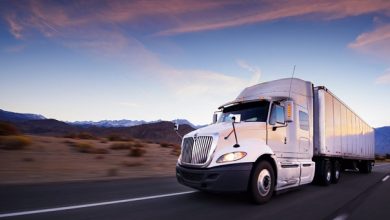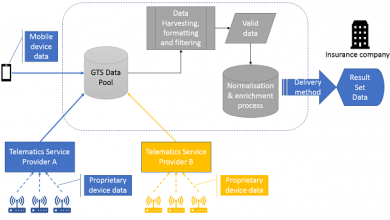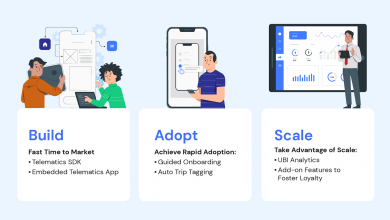Connected Vehicle Growth in India – Opportunities & Challenges
Author: ANIL GUPTA, Technology Consultant for BigData, Machine Learning, Data Analytics and Internet of Thing Thinker, Writer
Automobile sector has been observing rapid growth over past decade & half. Today we see close to 200 million on vehicles on the road. Last year( FY 15-16), the vehicle sales was 20.47m, out of which 2.79m units were passenger cars, 0.69m commercial vehicles, 16.5m two-wheelers, and 0.54m 3-wheeler. Growth has been secular across all segments. The sector is experiencing many innovations to improve the quality of the product & services. Innovations have been across every segment of automobile – towards exteriors, interiors, convinience, engine performance improvement

Connectivity in vehicles – We are now entering the phase, where connectivity feature in vehicle is taking the shape from luxury to necessity. It is expected that by 2025 all vehicles will have some sort of connectivity with the infrastructure. So, what is connected vehicle ? Connected vehicle is a vehicle/mobility device, which is connected to back-end IT-infrastructure of governments and corporations. The vechile shares regularly shares the data with these systems, and in return receives value added services such as predictive maintenance, safety services, traffic services, security services etc that improve the driving experience.
Connectivity in vehicle is not a new phenomenon. It has been existing for more than one and half decade now. Emergency safety service like Onstar was launched in late 90s. Navigation systems, traffic control & traffic warning systems also started surfacing in early 2000s. Ever since connectivity has come into existance, more and more features and usecases have started showing up with connected vehicle. In passenger segment, connected car services are used for a variety of services like –Infotainment, Productivity applications, Location based services, Traffic assistance services, Parking assitance services, Roadside assistance services, Emergency call services, Remote services such as stolen vehicle tracking, monitor teen driving, locating car withing parking lot, personalized car setting based on the driver, Insurance telematics, proactive maintenance etc.
Likewise in the commercial vehicle segment also connectivity in vehicles proved to be very useful. Services like vehicle location monitoring, smart location based logistics management, fuel theft monitoring, idling time, route tracking and monitoring, speed monitoring, traffic violation reports etc are helping the service providers to optimize operations and save cost of operations.
As we mentioned Connectivity services in the vehicle are rapidly moving from Luxury, Differentiated to Essential, Integrated services. There are several factors acting as catalyst in this journey. Rapid adoption of Smartphone and smartphone enabled services has increased the awareness of connected services among common users. Ubiquitous connectivity, drop in the bandwidth cost and rapid expansion of high speed wireless connectivity also enabled such move. Location based, personalized and context driven services are another factor for giving rise to connected services.
factor for giving rise to connected services.
As far as the connected vehicles services goes, the market in India is still in the early stage. It is evident among major OEM players that they need to essentially roll out services to stay in the game, otherwise it will be too late for their market position. However there are some basic questions that most of the players are currently struggling with. These are
• Is consumer ready to pay for the services ? Will consumer ever pay for connected services ? Indian consumer is highly price conscious and (s)he would like to derive maximum out of the buck spent. We have observed constant price drop in the consumer electronics and connectivity cost even though the product& services constantly get better. Alternative channels for obtaining these services are available to consumer through the use of their smartphones. In this context, there are apprehensions ( and rightly so) about the revenue generation of these services.
• If not, who will sponsor ? How to justify the investments and recover the incurred investments through other means ? Irrespective of whether consumer pays or not, there is need for huge initial capital investment and operational expenses. OEMs have challenge to find out sponsor for meeting these expenses and justifying the RoI for these investments.
• While services are more and can be really classified as market differentiated services ? There are plethora of services available which can be offerered. Budgets are limited. There is very limited awareness in the end consumer about these services, and the truth is end consumer is not in the position to prioritize without actually seeing and experiencing these services. Prioritisation and road-map definition becomes very challenging task for OEMs and other eco-system providers.
• How the V2V and V2I services going to evolve ? Is there sufficient case for them to inflience government bodies for building V2V and V2I infrastructure ?How to provide connectivity in the vehicle ? Who will ultimately pay for high consumption of bandwidth that will be consumed for bandwidth sucking infotainment /entertainment services ?
When we talk of vehicle connected services, there are several services, and each of these service do have specific need for connectivity. Some applications require high bandwidth connectivity, whereas some are ok with lower bandwidth. Benefit of some services are directly visible to end consumer ( and hence consumer may be ok topay for such connectity) whereas for some of the services it is indirect. The collection of data is for OEMs and Dealership. Customers usually are not ok to pay for such connectivity needs. When it comes to connectivity, there are several options, during the design and configuration it is to consider various options. Roaming charges etc could be another issue to tackle for service providers.
• Constant connectivity is still a problem in India, especially in rural areas and stretches on highways where connectivity dropouts are constantly experienced. How to ensure service continuity and SLAs in such cases. Connected services needs an integrated and evolving approach rather than silos, point solutions. In the cost-conscious Indian market there are a lot of options available in the form of after-market point solutions. These solutions appears to be cost effective as far as one solution is concerned, but not flexible to provide other services. In the long run, these solutions offer very limited opportunity for services evolutions and development of new value added services. Like other sharing economy platforms like Google, Facebook, Airbnb etc. the focus for OEMs should be to create right set of infrastructures and platform for future services. Revenues will automatically follow.




